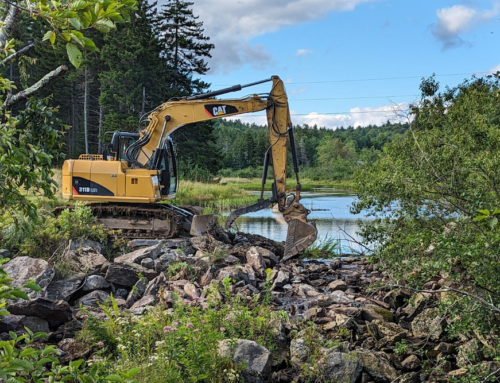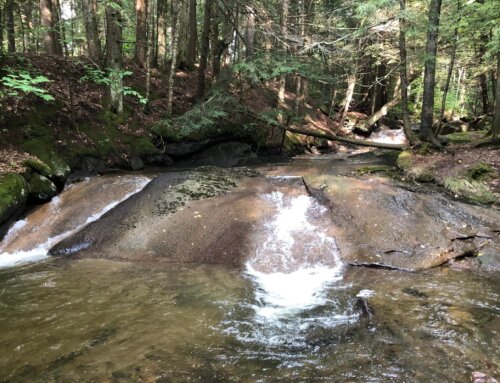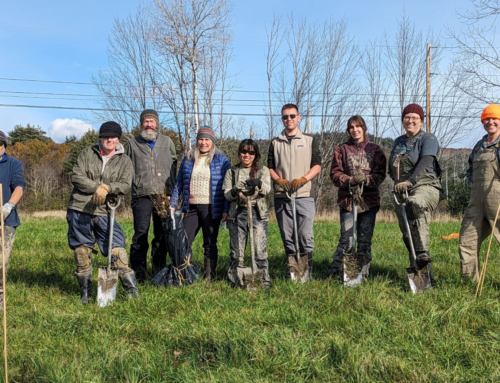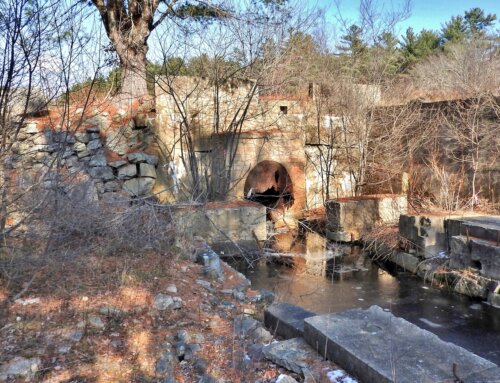Vermont. October 1, 2011. The unrelenting precipitation from Irene caused rivers to rise and as flows increased the rivers turned brown, jumped their banks and where they could flowed into their floodplains and unfortunately into homes, businesses, farm fields and forests. They eroded our roads and sweep away bridges. The widespread devastation was stunning and saddening. Now people are asking: “What went wrong with our rivers?”
The answer is: “There is nothing wrong with our rivers!” A river is an exquisitely balanced natural system that is controlled by the laws of nature and behaves as it does because of the results of the well understood principals of gravity, force, work and friction. Those principals in action control the hydrological functions of a river. A river has no choice in the matter. The laws of nature are in charge and, despite those who would do so, these laws cannot be ignored, modified or repealed.
In real life, interference with the natural dynamics of a river changes how a river behaves during high flow events. Human changes to a river — like building in its floodplain, straightening a river, removing gravel from a river, removing the natural plants from the riparian zones and then replacing them with hard armor rip rap and shutting a river off from its floodplain with berms, roadways and train tracks — are all actions that increase the exposure of property to damage during flooding.
An unmodified river during high water transports two primary things, water and sediment. Until the terrain of the Connecticut River valley is eroded down to sea level our rivers will continue to move sediment to the sea. Gravity induces water to flow downhill. On its way down to the ocean, water does work as the friction between water and land plucks tiny pieces of our mountains, hills and any land above sea level into suspension and eventually deposits this mix in the ocean.
The damage we see during flooding now is in large measure due to our own activities that encroach physically on our rivers. We choked our river valleys with sediment washed down from our mountains after we stripped them of trees in the 19th century. They are still recovering from that onslaught. We cause rivers to rise faster when we create surfaces that do not absorb water but shoot it right into our rivers. We increase erosive power of rivers when we reduce river access to their floodplains, fill wetlands and strip the trees and bushes from the riparian zone. We destabilize our rivers when we create pinch points at under-sized bridges and culverts, remove measurable amounts of gravel and straighten or move rivers. These actions are all guaranteed to increase damage to property during flooding.
We will not stop rivers from flooding by making the rip rap stone larger, removing gravel, constructing higher berms or making rivers arrow straight from its source to confluence with a larger body of water. The laws of nature will not allow those approaches to be successful. What will lessen impacts from events like Irene is to allow rivers to access their floodplains and wetlands where the river flows can spread out and slow down. We should allow rivers to form meanders even in locations threatening to us so the meanders can absorb the force of the river flows and we should allow rivers to naturally move and deposit gravel when and where they wish as they have done to achieve stability for millenniums.
What rivers do in flood events is set the stage to reduce impacts of the river in subsequent events. They expand their floodplains, increase meanders and create wider channels to absorb flows within the bank of the river. What we are doing in many of our rivers right now, even in places where no infrastructure is threatened, is take away those adjustments the river made for itself. Removing gravel, straightening and/or berming a river creates an unstable river heightening the odds that the next high water will have increased impacts on the things we claim to be protecting.
The extensive scraping and digging in our rivers that is going on post Irene extracts a terrible price from the life in a river. High water scours the banks and bottom of a river and that is hard on aquatic species but some of the work going on now in our rivers continues to disturb the river bottom slowing the recovery process. There does not seem to be an awareness that the structure, shape and form of the transformed stream and whether its bottom is comprised of silt, gravel, cobble or boulders will determine when the food chain will reestablish in that river reach. Fish gill injury and an inability of fish to see in order to feed result from continued exposure to high suspended sediment loads.
If we are working in a river we should make sure we need to be there and once our infrastructure is repaired we should be thoughtful about making any further changes in our rivers. If we respect the immutable laws of nature we can anticipate what a river will do in flood. If we want healthy rivers and to protect our property and infrastructure we should modify our activities — not the rivers — in order to prepare for flooding. We can make choices that protect our property and protect our rivers. We should make the right choices.
# # # #
David Deen is River Steward for the Connecticut River Watershed Council. CRC has been a protector of the Connecticut River for more than half a century.







